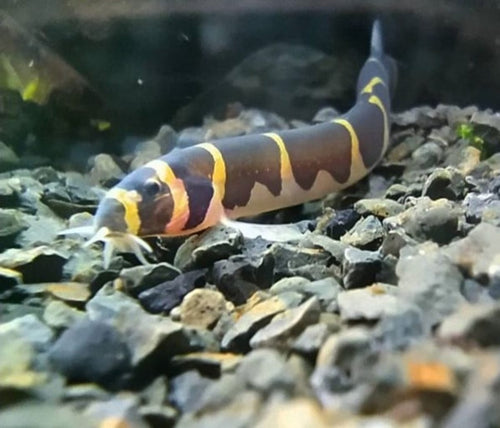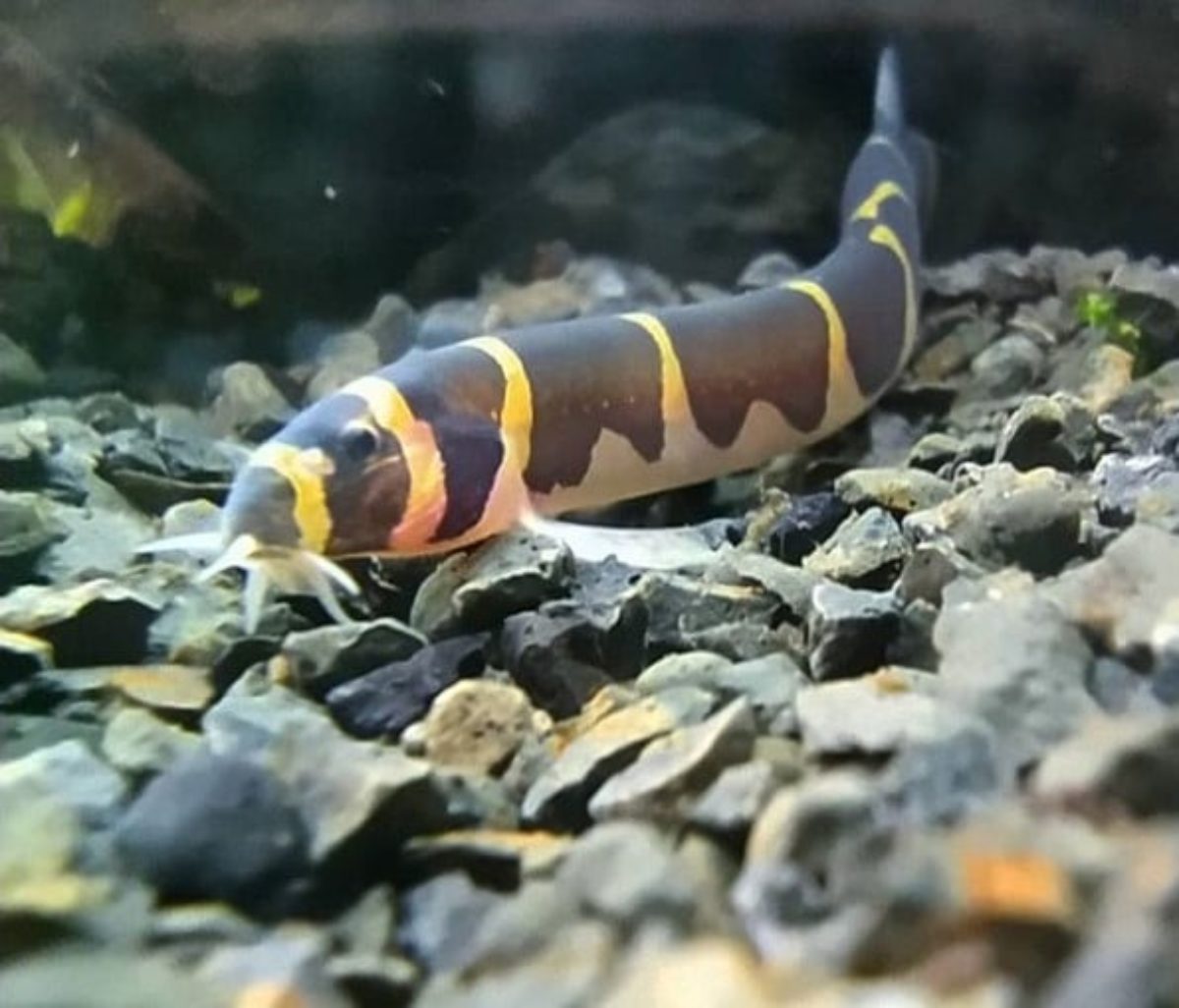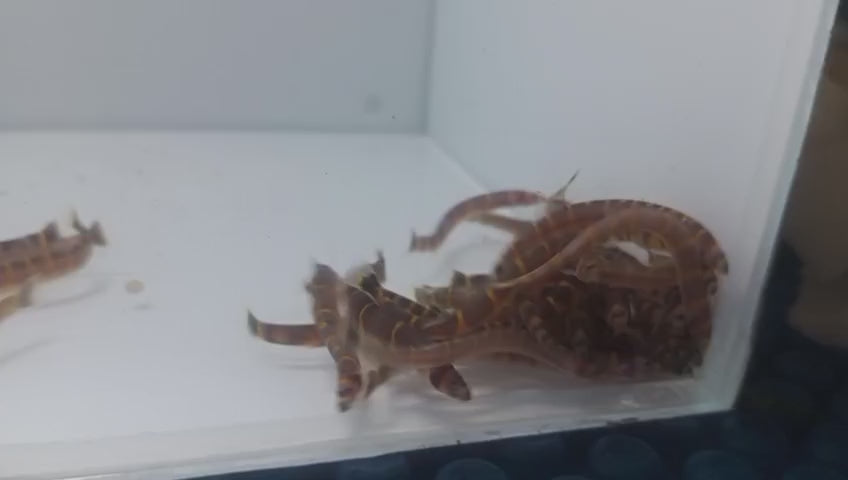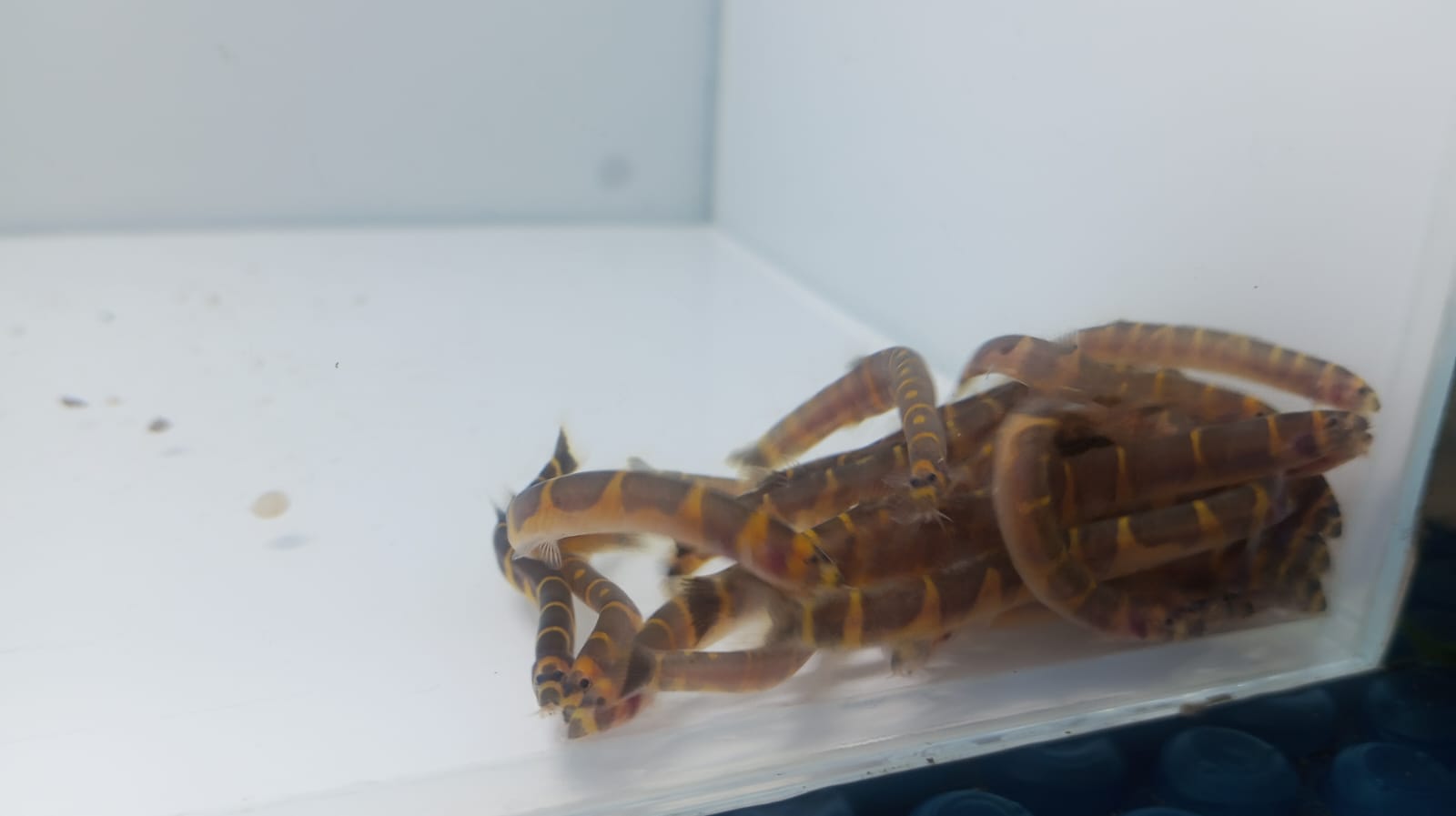Loach-Striped Kuhli
Loach-Striped Kuhli
check_circle Fast Shipping
check_circle Quality Products
check_circle Affordable Price
Reach out to us on ''available to order'' items via WhatsApp or email
Out of stock
Couldn't load pickup availability

Loach-Striped Kuhli
package_2
Product Description
Product Description
All our fish, shrimp and corals are bagged with fresh oxygen as well as a heat pack in winter.
When ordering livestock please select the box size and add it to your cart for accurate overnight (1-2 days) shipping costs. A small box can take 1-2 bags and a medium box 6 bags. One bag fits max 10 small (1-3cm) fish or max 2 medium (3-5cm) fish or max 1 large (>5cm) fish.
ONE SPECIES PER BAG. Eg: One bag of 10 neon tetra.
Kuhli Loach (Pangio kuhlii)
Description:
-
Appearance:
- Body: Elongated, cylindrical, and snake-like.
- Color: Tan to light brown with distinctive dark horizontal bands or stripes running along the body.
- Fins: Small, subtle fins with a high dorsal fin that is typically not very prominent.
- Size: Typically grows to about 3-4 inches (7-10 cm) in length.
- Distinctive Feature: Its eel-like shape and banded coloration make it unique and easily recognizable.
-
Behavior:
- Activity: Active and nocturnal, meaning they are most active during the night or in low-light conditions.
- Social Structure: Social fish that thrive in groups. Best kept in schools of at least 5-6 individuals to reduce stress and exhibit natural behaviors.
Care Requirements:
-
Tank Size:
- Minimum: 20 gallons (75 liters). A larger tank is better to provide ample space for burrowing and exploring.
-
Water Parameters:
- Temperature: 74-82°F (23-28°C). They prefer a warm and stable environment.
- pH: 6.0-7.5. They thrive in slightly acidic to neutral water.
- Hardness: Soft to moderately hard water.
- Filtration: Good filtration is necessary to maintain water quality. Ensure the filter does not create strong currents, as Kuhli Loaches prefer calm waters.
-
Tank Setup:
- Substrate: Soft, fine substrate such as sand or smooth gravel. They like to dig and hide, so a non-abrasive substrate is best.
- Aquascaping: Provide plenty of hiding spots with rocks, driftwood, and live plants. They appreciate having places to burrow and explore.
- Lighting: Low to moderate lighting. They are nocturnal and prefer dimly lit conditions.
-
Diet:
- Primary Food: Omnivorous. Will eat a variety of foods including high-quality sinking pellets, live or frozen foods such as bloodworms, brine shrimp, and small invertebrates.
- Supplemental Food: Offer occasional treats like small insects or chopped vegetables. They also enjoy sinking wafers and food designed for bottom feeders.
-
Behavioral Considerations:
- Compatibility: Peaceful with other fish. Ideal tank mates include other peaceful species that do not harass or outcompete them for food.
- Social Behavior: Prefer to be in groups. They feel more secure and exhibit more natural behavior when kept in schools.
-
Tank Maintenance:
- Water Changes: Regular water changes (20-30% weekly) are essential to maintain water quality and remove waste.
- Cleaning: Clean the tank regularly, removing uneaten food and detritus. Maintain the filter and ensure it is not creating excessive current.
-
Health Care:
- Observation: Monitor for signs of stress or illness, such as changes in behavior, loss of appetite, or visible symptoms like unusual coloration or lesions.
- Treatment: Maintain optimal water conditions and consult an aquarium professional if health issues arise. Common issues include skin infections, parasites, and fin rot.





